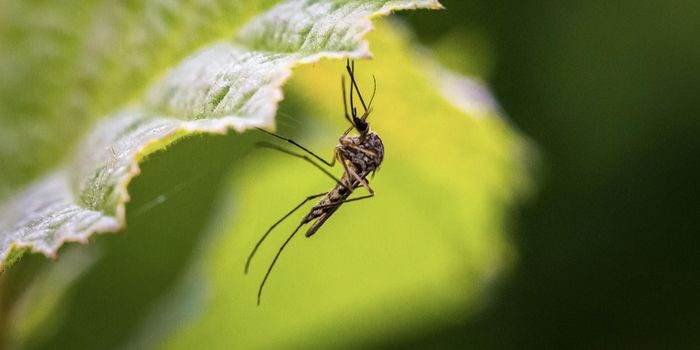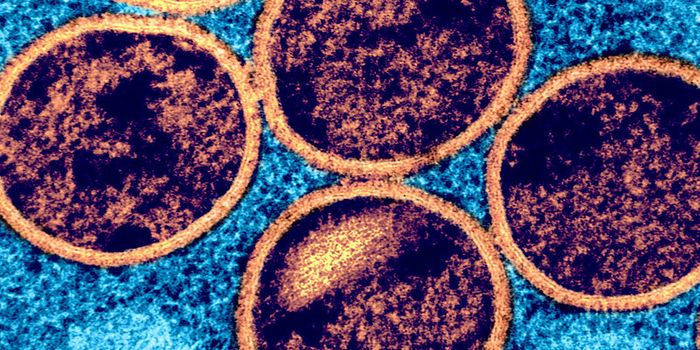Researchers Surprised to Find Giant Viruses in Forest Soil
Viruses had been thought of as tiny infectious agents for the most part, until researchers began to discover more and more giant viruses, which are hundreds of times bigger than their small counterparts. They have been found in the ocean, in thawing permafrost, and now, sixteen new ones have been discovered in only a tiny amount of soil from the Harvard Forest in Petersham, Massachusetts. A team of scientists led by biologist Jeff Blanchard of the University of Massachusetts Amherst reported their surprising findings in Nature Communications.
A long-term experiment is underway at the research forest, where cables are warming the soil to about five degrees Celsius hotter than ambient, generating an artificial outdoor model of climate change. “We were not looking for giant viruses,” said Blanchard. “Our goal was to isolate bacteria directly from the environment to understand how microbial communities are changing in response to soil warming.”
The team harvested microbial cells from soil they collected and suspended them in a mild detergent along with a dye that binds to DNA. They passed that sample through a machine that can sort out individual cells. Giant viruses have a huge genome that is similar in size to a bacterial genome, and they can be sorted out with this method, explained Blanchard.
Those cells got sorted with other similar cells, and collaborator Tanja Woyke of the Joint Genome Institute (JGI) in Walnut Creek, California, then stepped in to perform mini-metagenomics - a new method for gathering genomic data from small batches of cells. The team generated sequence data from more than 2,000 cells, said Blanchard. The effort revealed sixteen new giant viruses. For Blanchard, it was “a wonderful surprise and very exciting new science.”
“The fact that we found all these giant virus genomes in soil was especially intriguing, as most of the previously described giant viruses were discovered in aquatic habitats. The metagenomic data generated here from a single sampling site contained far more new giant virus genomes than any other dataset I have seen to date,” said JGI bioinformaticist Frederik Schulz, co-first author of the report. “We recovered sixteen distinct giant virus genomes in this study, but we are merely scratching the surface. If we sample more at the same site this number would easily double, triple or even quadruple,” he added.
Related: Giant Viruses can Make Their Own Genes
Typically, giant virus research requires researchers to enter into a labor-intensive process in which they grow a protist or amoeba that can then host the virus of interest (as shown in the video above).
“They’re hard to work with, and only viruses that grow in that host will be cultivated,” noted Blanchard. “There are millions of potential host species and it would be impossible to use this approach with them all.” When cells can be harvested right from the environment, however, mini-metagenomics enables researchers to collect genomic data for less money, he said. (For a brief explanation of metagenomics, check out the video at the bottom of the article).
“Tanja is famous for sequencing genomes of hard-to-cultivate organisms from environmental samples and she had the intuition that if we took this new approach, new branches of life would be revealed. While using this method we don’t know what our giant viruses look like; one could try to repeat the experiment in future research to image some particles after they are sorted,” Blanchard said.
“Not only did we just discover many new giant viruses, but we did it using a thimbleful of soil. It would be nice to characterize these viruses one at a time; there’s a lot of skill and art in that. But it would be a years-long project,” added Blanchard. “Finding sixteen at once is kind of overwhelming, and none of them are the same. If you think of all the soil in the world, if there are 10,000 species of bacteria in a gram of soil, about a teaspoon, imagine how many new giant viruses are out there.”
“To me, the most intriguing and eye-opening part of the study was the high number and diversity of major capsid proteins, which is like a barcode for giant viruses, found in the unassembled bulk soil metagenome. Deep sequencing of soil metagenomes is revolutionizing our understanding of this very important terrestrial [ecosystem] with many exciting soil microbiome initiatives ongoing, yet our data emphasizes that still many missing pieces to the puzzle remain,” concluded Woyke.
Sources: Phys.org via University of Massachusetts Amherst, Nature Communications








